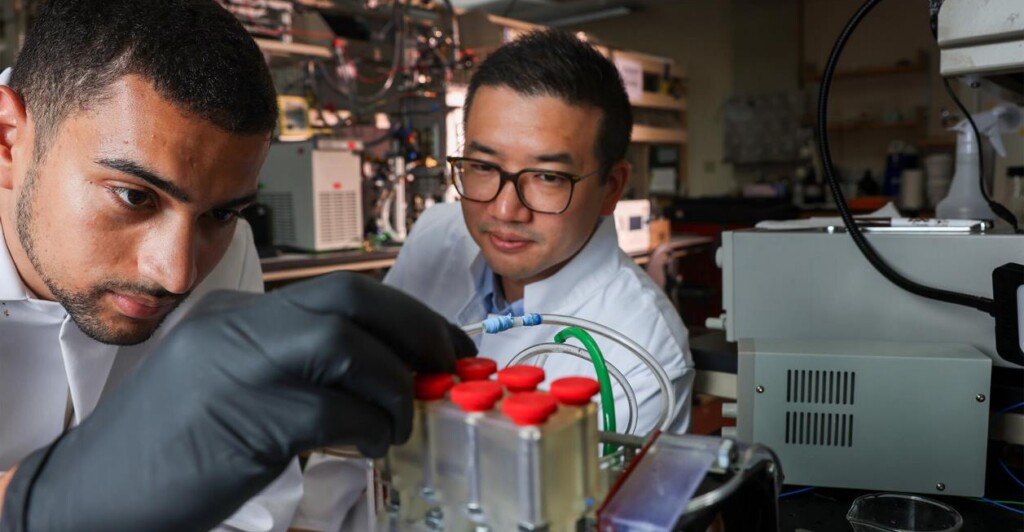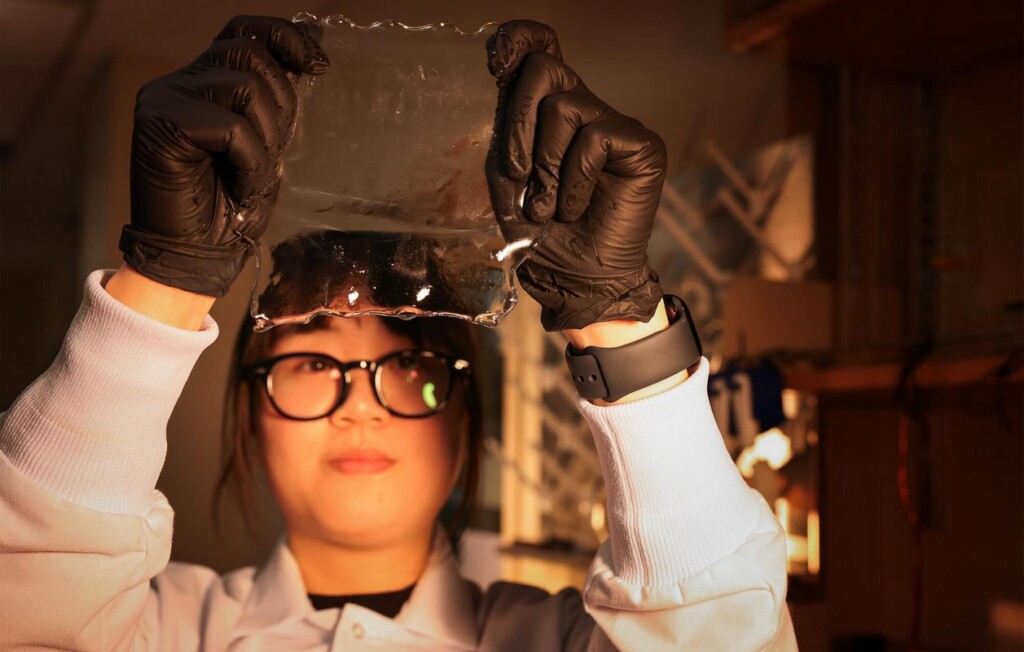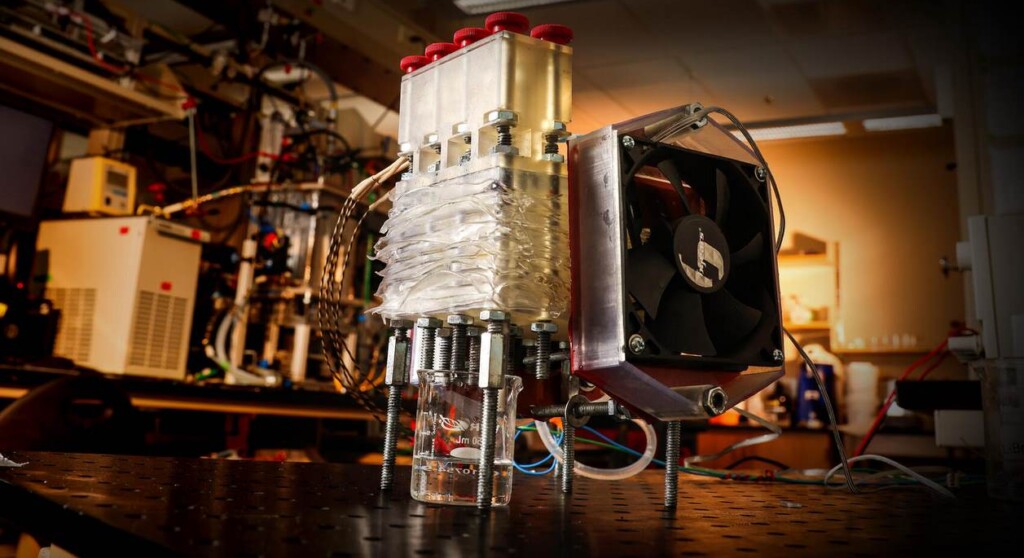 Undergrad researcher Benjamin Sabir helps H. Jeremy Cho examine the atmospheric water harvesting device. (Jeff Scheid/UNLV)
Undergrad researcher Benjamin Sabir helps H. Jeremy Cho examine the atmospheric water harvesting device. (Jeff Scheid/UNLV)With government funding, a team of engineers at Univ. of Las Vegas are poised to revolutionize how water is supplied in desert climes.
Their new system pulls gallons of water a day out of the air around us, and far from sitting on a bench in a laboratory, this incredible innovation is already moving to market.
Dubbed a ‘watershed moment,’ UNLV mechanical engineering professor H. Jeremy Cho. took a look at all the ways that modern societies use technology to pull water from the air and believed he could make it substantially better.
Desert-dwelling cultures have been creating and sharing innovations for tackling this challenge of nature for millennia, and Professor Cho used nature itself as an inspiration.
Existing mechanical systems of atmospheric water capture typically yield less-than a gallon a day and suffer from diminishing returns at under 30% humidity. Cho’s design relies on a hydrogel membrane inspired by frog’s skin as well as certain plants.
“We took that biological idea and tried to do it in our own way,” Cho told UNLV press. “There are so many cool things happening in nature—you just have to look around, learn, and be inspired.”
 Undergrad researcher Emilie Luong holds a hydrogel membrane, an integral part of WAVR’s atmospheric water harvesting process. (Jeff Scheid/UNLV)
Undergrad researcher Emilie Luong holds a hydrogel membrane, an integral part of WAVR’s atmospheric water harvesting process. (Jeff Scheid/UNLV)But just how much water could realistically be harvested from the air in a place as dry as Las Vegas? Actually, Cho says that of the hundreds of millions of gallons of water that Clark County consumes every day, there is about the same moisturizing the 30 feet of air closest to the ground.
Cho encourages people to view the atmosphere as a big invisible river.
To the end of tapping that river, Cho teamed up with UNLV undergrad researchers Emilie Luong and Benjamin Sabir and others
 A device capable of atmospheric water harvesting in H. Jeremy Cho’s lab. (Jeff Scheid/UNLV)
A device capable of atmospheric water harvesting in H. Jeremy Cho’s lab. (Jeff Scheid/UNLV)to launch WAVR, a UNLV-startup and the first effort of its kind spun off from the National Science Foundation’s Southwest Sustainability Innovation Engine (SWSIE), which gave Cho a generous grant for his research.
GOOD TECH STORIES: Creating Electricity From Moisture in the Air, Even in the Sahara Desert
WAVR’s patented technology can capture 5-times more water than any other atmospheric water harvesting system, and with so much water available, stands to be a life-changing invention for the Southwest.
SIMILAR TECHNOLOGIES: Device Pulls Dozens of Liters of Water from the Air–Already Being Installed in Jordanian Desert Homes
The first paper published on the WAVR devices established that certain conditions allowed for between 0.75 to 1.5 gallons of water per square meter of membrane, per day, could be generated in Las Vegas’s arid air.
“This paper really establishes that you can capture water at a very fast rate,” said Cho. “We can start to forecast how big of a system we would need to produce a set amount of water. If I have one square meter, which is around three feet by three feet, we can generate about a gallon of water per day in Las Vegas, and up to three times more in humid environments.”
The water is collected via the aqua-conductive powers of salt, and can be then turned either into drinking water or via simple electrolysis into green hydrogen fuel to power fuel cell vehicles like planes, trains, cars, or heavy equipment.
OTHER DESERT NEWS: After Mojave Fires, Camels Help Restore Iconic Joshua Tree Groves in the Cherished California Desert
“Identifying technologies and innovations that can transform lives for the better, create jobs, and diversify the local economy is a critical function of what we’re doing at UNLV and throughout the region,” said Zach Miles, senior associate vice president for UNLV’s Office of Economic Development and SWSIE workforce development lead. “In the case of WAVR, you can see all of this in action, which I believe has helped move this startup forward.”
WATCH the story below from UNLV…
SHARE This Amazing Innovation With Your Friends In The Southwest…
Source link

